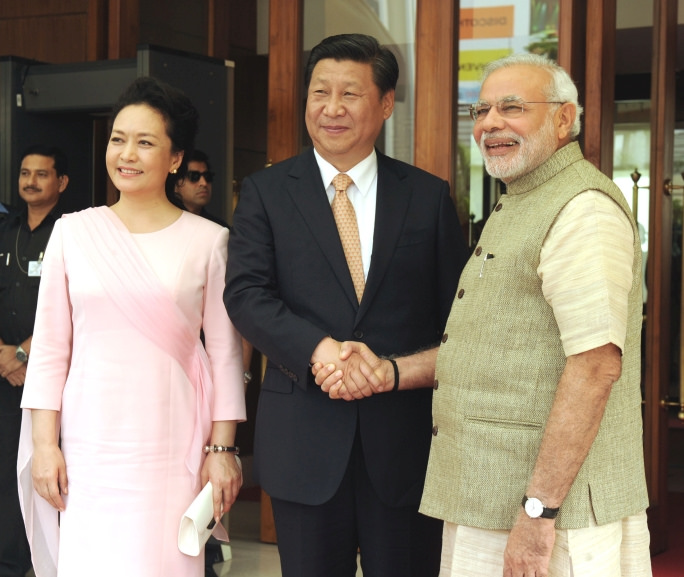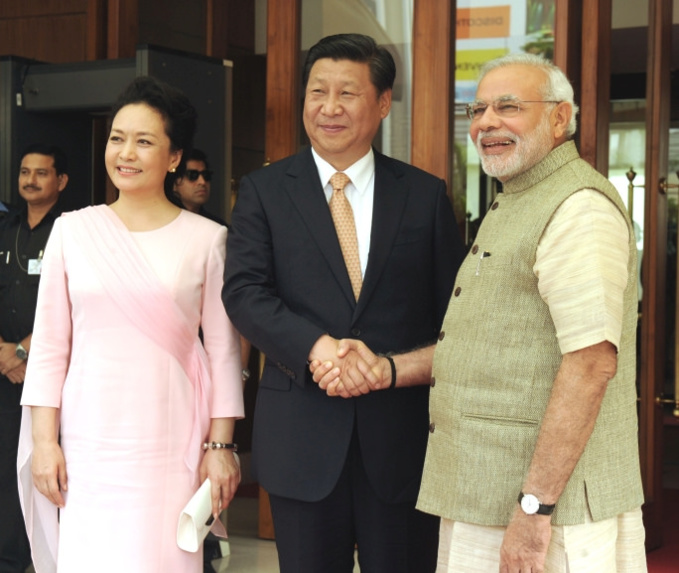The confrontation between India, Bhutan and China began on June 16, when Indian soldiers noticed construction activities on the disputed territory on the Doklam plateau. The Chinese workers seemed to be building a road that would allow China to expand its influence further into the territory claimed by Bhutan, thereby giving Beijing an opportunity to reduce territory in northeast India.
India responded immediately. The government sent troops to Bhutan to stop road construction work, demanding the restoration of the status quo. As explained by Indian Foreign Minister Sushma Swaraj: "The cause of our problems is China’s actions in those places that are important for determining the border between India, China and Bhutan and creating a balance between India and China in the Sikkim sector."
China, for its part, demanded that India unequivocally abandon the Doklam plateau before any meaningful bilateral talks were held. The state media launched a campaign that from time to time was threatening with war and reminding of the conflict between the two countries in 1962 and the humiliating defeat India. New Delhi was responsible for coping with the crisis, refusing to participate in the escalation of the conflict. The tensions continued to grow until August 26, when mutual understanding was achieved with withdrawal of Indian troops and termination of the construction of the Chinese road in the area.
Despite the behavior of both sides, the BRICS summit held in early September played a key role in the end result. It would have been hard for Indian Prime Minister Narendra Modi to justify his presence at the summit, when Indian and Chinese troops were colliding with each other at the border. And for Chinese President Xi Jinping, who wants to present himself as a world state leader, the absence of India would mean the beginning of the end of the BRICS. This fact would undermine Xi's reputation on the eve of the Communist Party congress in October.
Since the action moved to Xiamen for the BRICS summit, India stressed its dissatisfaction with how the BRICS member states tackled the problem of terrorism during the previous summit in Goa. Despite the fact that India has made fight with terrorism a priority, not only China hindered India's attempts to include names of Pakistani terrorist groups, such as LeT and JeM, in the BRICS 2016 declaration, but also openly defended Pakistan after the summit, saying that it opposes linking any country or religion with terror, and asking the world community to recognize Pakistan's "big sacrifices".
This agreement was not just a confirmation of the fact that the BRICS member states are facing common threats in the form of terrorism, but also a tribute to India's unchanged position on this issue. China warned Modi not to raise the terrorism issue at the BRICS summit, but India tried to include them in the agenda. Having listed terrorist organizations in Pakistan, the declaration of Xiamen stressed the change in regional realities for Pakistan. The latter accustomed to using China as a shield against the global pressure on terror.
Modi and Xi attempted to move away from the tension created by the short-lived confrontation of the Report, having managed to create a united front at the BRICS summit. They agreed that the situation related to the Doklam plateau should not be repeated, outlining new mechanisms for strengthening border security agreements that had been implemented in the past, and pointed to the need for a closer link between the defense and security system. Both countries also sought a rapprochement at the global level, emphasizing their opposition to the economic protectionism supported by Trump’s administration.
After resolving the Doklam plateau situation and demonstrating unity at the BRICS summit, the sense of balance returned to Sino-Indian relations. But the structural and domestic policies that form these relations continue to pave the way for a gloomy outlook. India and China are two growing powers in the large Asian strategic landscape, which is changing because of American disengagement. Both are governed by nationalist leaders who want to form a global policy to serve their national interests. And China is losing friends in India and keeps strengthening the view that it intends to challenge India's growth.
There is no guarantee that the disputed Sino-Indian border will remain peaceful. And, despite the peaceful resolution of the confrontation around the Doklam plateau and the success of the BRICS summit, there are a number of reasons to watch closely the future trajectory of relations between the two outstanding powers of Asia.
India responded immediately. The government sent troops to Bhutan to stop road construction work, demanding the restoration of the status quo. As explained by Indian Foreign Minister Sushma Swaraj: "The cause of our problems is China’s actions in those places that are important for determining the border between India, China and Bhutan and creating a balance between India and China in the Sikkim sector."
China, for its part, demanded that India unequivocally abandon the Doklam plateau before any meaningful bilateral talks were held. The state media launched a campaign that from time to time was threatening with war and reminding of the conflict between the two countries in 1962 and the humiliating defeat India. New Delhi was responsible for coping with the crisis, refusing to participate in the escalation of the conflict. The tensions continued to grow until August 26, when mutual understanding was achieved with withdrawal of Indian troops and termination of the construction of the Chinese road in the area.
Despite the behavior of both sides, the BRICS summit held in early September played a key role in the end result. It would have been hard for Indian Prime Minister Narendra Modi to justify his presence at the summit, when Indian and Chinese troops were colliding with each other at the border. And for Chinese President Xi Jinping, who wants to present himself as a world state leader, the absence of India would mean the beginning of the end of the BRICS. This fact would undermine Xi's reputation on the eve of the Communist Party congress in October.
Since the action moved to Xiamen for the BRICS summit, India stressed its dissatisfaction with how the BRICS member states tackled the problem of terrorism during the previous summit in Goa. Despite the fact that India has made fight with terrorism a priority, not only China hindered India's attempts to include names of Pakistani terrorist groups, such as LeT and JeM, in the BRICS 2016 declaration, but also openly defended Pakistan after the summit, saying that it opposes linking any country or religion with terror, and asking the world community to recognize Pakistan's "big sacrifices".
This agreement was not just a confirmation of the fact that the BRICS member states are facing common threats in the form of terrorism, but also a tribute to India's unchanged position on this issue. China warned Modi not to raise the terrorism issue at the BRICS summit, but India tried to include them in the agenda. Having listed terrorist organizations in Pakistan, the declaration of Xiamen stressed the change in regional realities for Pakistan. The latter accustomed to using China as a shield against the global pressure on terror.
Modi and Xi attempted to move away from the tension created by the short-lived confrontation of the Report, having managed to create a united front at the BRICS summit. They agreed that the situation related to the Doklam plateau should not be repeated, outlining new mechanisms for strengthening border security agreements that had been implemented in the past, and pointed to the need for a closer link between the defense and security system. Both countries also sought a rapprochement at the global level, emphasizing their opposition to the economic protectionism supported by Trump’s administration.
After resolving the Doklam plateau situation and demonstrating unity at the BRICS summit, the sense of balance returned to Sino-Indian relations. But the structural and domestic policies that form these relations continue to pave the way for a gloomy outlook. India and China are two growing powers in the large Asian strategic landscape, which is changing because of American disengagement. Both are governed by nationalist leaders who want to form a global policy to serve their national interests. And China is losing friends in India and keeps strengthening the view that it intends to challenge India's growth.
There is no guarantee that the disputed Sino-Indian border will remain peaceful. And, despite the peaceful resolution of the confrontation around the Doklam plateau and the success of the BRICS summit, there are a number of reasons to watch closely the future trajectory of relations between the two outstanding powers of Asia.



















